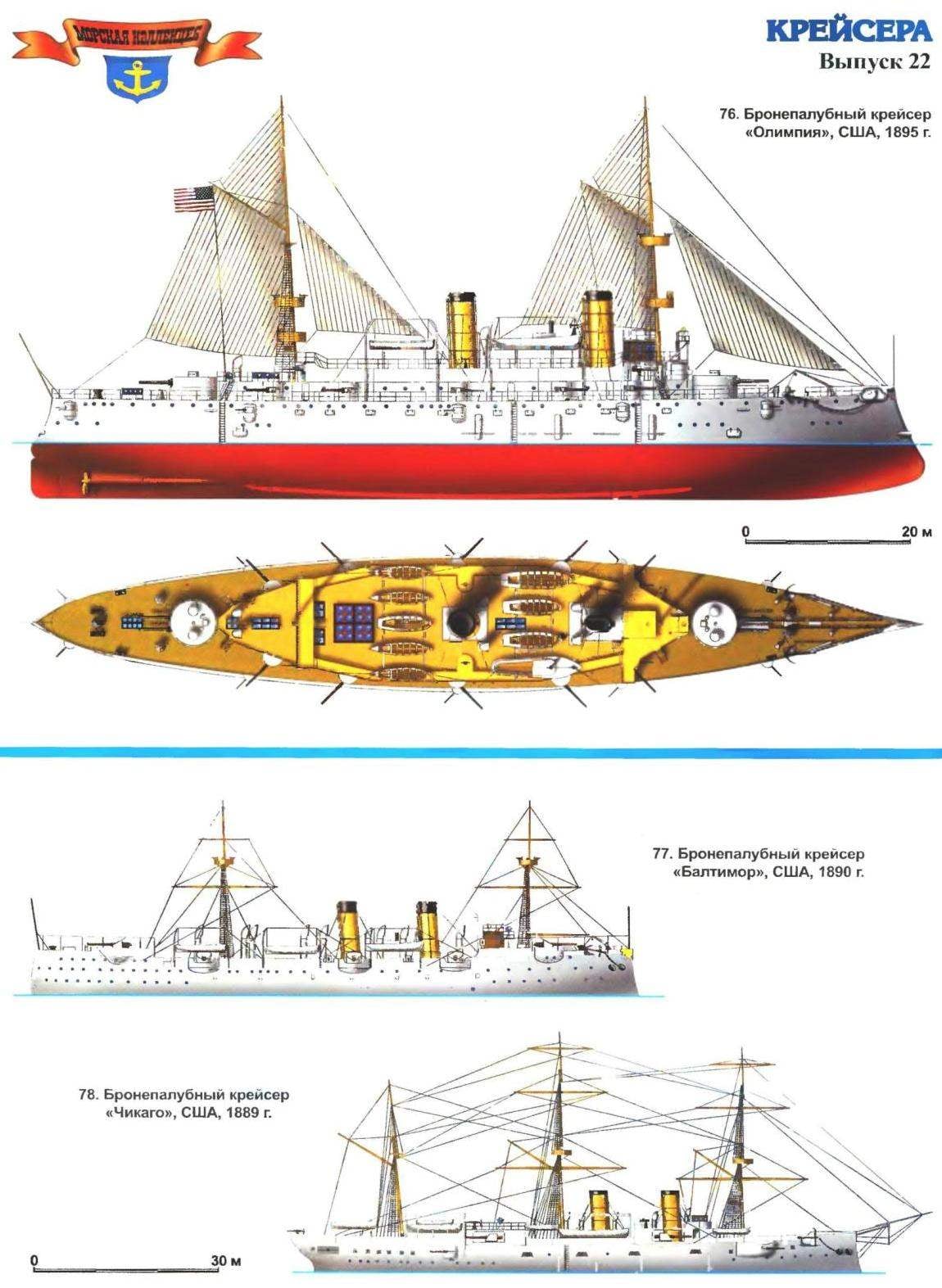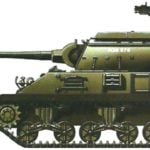 In the decade following the civil war greatest and bloodiest in American history, the United States experienced a steady rise. The country enjoyed its political and economic freedom, step by step closer to world supremacy in industrial production. Already in the mid 80-ies of the XIX century, steel production was compared with the same period in the British Empire. And on it there were many customers: a huge amount of metal left on the rapidly growing railway, agricultural equipment, commercial ships.
In the decade following the civil war greatest and bloodiest in American history, the United States experienced a steady rise. The country enjoyed its political and economic freedom, step by step closer to world supremacy in industrial production. Already in the mid 80-ies of the XIX century, steel production was compared with the same period in the British Empire. And on it there were many customers: a huge amount of metal left on the rapidly growing railway, agricultural equipment, commercial ships.
However, in this bustling life remained a backwater. United States fell into a long lethargy in the field of naval armaments. The remaining after the conquest of the southern States of the American Navy in number was nominally the largest in the world, but its quality left much to be desired. After a short shipbuilding activity at the end of 1860-ies and attempts to compete with Britain on the oceans, creating a fast and Autonomous cruiser (attempts as ambitious, and so unsuccessful was no more),— for one and a half decades in operation, none of the large ship. And who was in the Navy gradually fell into disrepair. From nearly a hundred different combat units in the sea could get no more than a third. The corruption and greed of the heyday of “wild capitalism” could affect the armed forces only with abhorrence. Marine Minister (by tradition, civil—official) W. Whitney sadly noticed in his report to the government that in 1885, not a single ship would not be able to survive in krakerstva even weeks and that any first-class naval power in the event of war quickly put US on his knees. He said that national naval forces are entirely dependent on England in the supply of guns and armor.
Without a single colony, the United States could afford to ignore “the rat race” of European countries do not stop the naval race. But from time to time. By the early 80-ies of the XIX century, occupied himself “uncle Sam” suddenly began to show themselves troubled southern neighbors. Their naval forces began to create Argentina, Chile and Brazil. However, they received the most modern ships, especially cruisers, from the best “designer”—the same Armstrong and French firms. Although the fleets of Latin American countries remained very small, their qualitative superiority over the hopelessly outdated and slower, mostly wooden ships, the Yankees were starting to look threatening. In addition, in the Western hemisphere there was another “player” whose interests increasingly intersect with U.S.: former “boss” nearly the whole of South America from Spain. She still had a few tidbits, located annoyingly close to the coast of States such as Cuba and Puerto Rico. Possible confrontation of the sea, even this minor by the time European monarchy in conjunction with its former colonies, promised unpleasant prospects.
Sleepy life, “U. S. Navy” ended with three triples: 3 March 1883 was passed the first decree on the construction of four modern ships completely on their own. With three cruisers and one messenger ship began the “new Navy” of the United States, named specifically, in order to draw a sharp boundary with the “old”, since the “great sleep.”
It is not surprising that the update began with the cruisers: combat units of this class were traditionally considered in the USA the most useful and effective. In addition, the sad state of military shipbuilding is not allowed to proceed immediately to a more massive units. Even with a relatively modest in its characteristics “ABC” (the names of the three cruisers”Atlanta”, “Boston”, “Chicago” and the messenger of the ship “Dolphin” began with the first letters of the Latin alphabet) had a significant problem. As the sole contractor was selected firm “John roach”, who had no experience in the construction of modern battle ships. Had to choose a very modest projects. Four of the firstborn had three steam single-shaft installation, and the only twin screw “Chicago” and his other, nes machines, not much different from created 30 years ago, before the civil war! None of the cruisers could not develop on trials of more than 15 knots. Old-fashioned for the late 1880-ies looked and protection: armour deck had no slopes and was not protected all the premises, but only the engine and boiler compartments, and its thickness was only 37 mm. as a strong side is quite powerful for their size and armament, consisting of eight – and six-inch, but these weapons were not rapid-fire. In addition, the requirement to maintain a full sailing rig led to the fact that the largest of the cruisers,”Chicago” nearly all the artillery was in battery on-Board (vosmidesyati — in the ribs-sponsons), limiting the power of a broadside of any half. On “Atlanta” and “Boston” designers tried to move away from the standard, placing the 8-inch guns in the extremities, and 6-inch in the Central superstructure, with original bevelled in the manner of a rhombus front and rear bulkheads. However, they clearly lacked the height of the side; head size is filled with waves, even on a 13-node move. It should be noted that “roach” and don’t try to install on the ships armament, and had to be mounted on the equally poorly equipped public shipyards, which still had at least some experience in dealing with artillery.
However, the three long was in the service and has been repeatedly modernized. So, in Chicago in the late nineteenth century even installed 25-mm protection Board battery, not including replacement machines, boilers and artillery. Until 1922 and lasted as less successful 1,500-ton Dolphin, armed with only a 152-mm gun (not counting skorostrel), for which the Navy called it the “pleasure craft”. Indeed, the greater part of his career he served as a kind of “yacht” the Secretary of state for the Navy (marine Minister).
However, the case moved from the dead point. Four years later, was followed by the laying of five much more modern units. One of them, “Newark”, represented a significant development of the ideas embodied in “Chicago”. Still with full rigging on all three masts, he already had all the artillery in the sponsons, allows you to provide more or less decent angles of attack and solid “cherepahoobraznoy” deck with bevels now covered the entire body. The design speed increased to 18 knots. More modern look “Charleston”—and not by accident. The Americans sensibly turned to his “stepmother” of England. “Charleston” reached on the testing of almost 19 knots, and was decorated with the Navy, but served less than 10 years, stumbled in 1899 at not marked on the map rock have just won Philippin.
British roots appear and “Baltimore” and “Philadelphia”. The first of them were created according to the drawings, purchased from sir Armstrong intended to build on order of the Spanish cruiser “Reina Regente”. After losing the competition, the enterprising, the manufacturer has proposed a design for the ocean. I must say, not without benefits for both sides. Larger than the “Esmeralda”, “Baltimore” had a higher Board with forecastle and poop and a very decent seakeeping, developing, moreover, a high speed of up to 19 knots. He actively participated not only in the war with Spain, but in the First world. Converted in minelayer, ex-cruiser played an important role in the production of “the Great Northern boom”, tens of thousands of mines blocked the North sea from Scotland to Norway.

76. Armored cruiser “Olympia” (USA, 1895)
It was built by the firm “crump”. Displacement 5865 t, length of maximum 104,87 m, width of 16.15 m, draft 6,55 m Power plants twin-shaft triple expansion 500 HP 13, speed 20 knots (on trials 17 300 HP and a host of 21.58). Armament: four 203 mm/35 and ten 127-mm/40 quick-firing guns, fourteen 57-mm and six 37-mm small-caliber rapid-fire guns, six 457-mm torpedo tubes. Booking: the tower 88 mm, 114 mm barbettes, submission 76 mm, 51 mm deck, on the bevel 120 mm, in the extremities of 76 mm, 127 mm. – cutting In the early 1900s, removed the torpedo tubes. In 1912 it was used as a floating barracks, with 203-mm turret was removed, but during the First world war reintegrated into the existing fleet. Retired from the Navy in 1922, continued to the present day as a Museum.
77. Armored cruiser “Baltimore” (USA, 1890)
It was built by the firm “crump”. The displacement of 4415 tonnes, length of maximum 102,11 m, width of 14.78 m, draft 5,91 m. the Power plants twin-shaft triple expansion 10 750 HP, speed 19 knots. Armament: four 203 mm/35, six 152 mm/30, four 57-mm, two 47-mm and two 37 mm rapid-fire guns of small caliber. Booking: deck 63 mm, bevels up to 102 mm, cutting 76 mm. In 1900— 1903 rearmed twelve 152 mm/40 quick-firing guns; also installed new boilers. In 1913— 1914 converted to minelayer with an armament of four 127-mm guns. Retired from the Navy in 1922, but scrapped only after 20 years, in 1942
78. Armored cruiser “Chicago” (USA, 1889)
It was built by the firm “John roach”. Displacement 4500 tons, length max of 104.29 m, width 14.7 m, draft 5,77 m. Capacity twin-shaft plants 5000 HP, speed 14 knots. Armament: four 203 mm/30, six 152 mm/30, and two 127-mm/30 guns, two 57 mm and two 37 mm rapid-fire guns of small caliber. Booking: the 37 mm. deck Upgraded in 1895 — 1898. with the installation of new machines with a capacity of 9000 HP; speed 18 knots. Artillery replaced by two 203 mm/35 and fourteen-127-mm/40 quick-firing guns, and an armored cabin (76 mm). Since 1910 in reserve after the First world war — the mother ship for submarines with armed with four 127-mm guns. Since 1923 a floating barracks at pearl Harbor. In 1928 renamed “Elton”. In 1936 he was dismissed from the fleet, sank while being towed to a breaker.
A clearly negative factor was the attraction of Americans to the preservation of the greatest possible sailing arms. If the “native Britons” “Charleston” and “Baltimore” had a couple of masts with limited sail, own version, developed on the basis of the latter, were, in fact, a large three-masted schooner. Artillery and the protection of the “Philadelphia” was close to the prototype, only a mixture of 8 – and 6-Dujmovic reduced to a homogeneous armament of twelve 152-mm guns. From useless to the severity of the tackle subsequently tried to get rid of. In 1902 the cruiser came to the state shipyard in the Puget Sound where … and left to delivery for scrapping in 1927, serving as a support vessel.
Interestingly, since “Newark”, which marked a really new and modern warship, the Americans moved from alphabetic naming scheme on their cruisers “new fleet” to the number. Now they got together with the name of the symbol representing the letter “C” (from the English “cruiser”) with the addition of ordinal numbers. Apparently, even then, the ambitious leaders of the fleet assumed that the alphabet very soon may not be enough, and introduced this convenient and coherent system existed safely for many years.
Cruiser S5, aka “San Francisco”, was a slightly improved “Newark”, which had a knot greater speed and the same uniform service as “Philadelphia”. In 1908 -1910 years he has also completed the conversion of the minelayer with an armament of eight 127-mm guns. At the end of the First world war, the number had halved due to higher mine loads as “San Francisco” along with “Baltimore” and participated in the same Grand production in the North sea.
American cruiser of the “second wave”, a lot adopted from the British samples, became a transitional link to its own development, in which overseas engineers began to show more and more originality and inventiveness, developing your own style and handwriting. With regard to their implementation, “Roach” serious work is no longer battered, but in one of the leading suppliers entered Philadelphia breeder crump and the “Union Iron Works”, is entirely built of the top five. It is being actively developed and the state of the shipyard in a few years they were ready to take the lion’s share of orders.
Following the decree of 7 September 1888 provided the only fully domestic projects. His “highlight” was a great cruiser “Olympia”, which revealed many features of the future “colleagues”. With the mast finally disappeared anachronistic mast, 127-mm artillery was rapid-fire, and main battery of four 8-Dujmovic for the first time were located in armored towers. For the first time on a ship of this class was a US torpedo. It is appropriate to recall yet another purely American characteristics, related to weapons. Overseas sailors and engineers are very loved 6-pounder (57-mm) skorostrel installed on all ships, starting with “Atlanta”. Their number constantly increased and reached at the “Olympia” fourteen. It was believed that they can be very useful for the then small distances fight against any unarmored targets. Indeed, of the 57-millimetrovogo actively shot in all the battles of the Spanish-American war, sometimes not without success. The characteristic of steel and very thick bevels armored deck, reaching 114 mm. they made the American cruiser very well protected—regardless of that, they had the armor belt or remained armored. High-speed 20-usloviy cruiser, more for his service which carried tropical color, was nicknamed “the white cruiser”. He was distinguished by proportional and beautiful appearance, so it’s up to our days have survived is truly one of the most outstanding examples of military shipbuilding in the 90-ies of the last century. Of course, the reason for such a reverent attitude to Olimpia is not only and not so much that it pleasing to the eye. In 1898 she headed a detachment under the command of Commodore Dewey into Manila Bay and destroyed the Spanish squadron, and the flagship did the lion’s share of the work. The cruiser continued to be actively used in the First world war, when it was removed with 203 mm of tower, leaving only a dozen long-barreled pyatidyuymovym, replacing the old 40-caliber. Many years later on embarked on eternal Parking in veteran-Museum established models terrible vospityvat.
Pretty original were small and the cruiser “Cincinnati” and “Raleigh”, founded on the same program 1888. For its 3200 tonnes displacement, they carried a very good armament of eleven guns, one of which was 152 mm, and the rest— 127-mm (Later this heterogeneity refused, replacing the 6-inch 127-mm cannon.) The ships were the new steam engine triple expansion vertical cylinders and a modern boiler. Came into operation in 1895, they made a last attempt to save the sails, although with a very limited area. Five years later, the sails finally disappeared from the American fleet, it is becoming more and more “civilized” and modern.
But the Yankee fleet continued to maintain the national character. One of them was a craving for the construction of a bit unusual for Europeans of the ships, occupies an intermediate place between these cruisers and so beloved by Americans gun-boats. (In the British Navy they best matches of the cruiser-“sloops” of the 3rd class.) Three of these “hybrids” of modern formation also appeared on the programme in 1888. “Montgomery”, “Detroit” and “Marblehead” had a displacement of about 2,100 tons, but was carrying nine rapid-fire pyatidyuymovym, one of which was mounted on the upper deck in the nose, and the rest on the sides. It is clear that with such weapons and such a small amount of serious protection could not be secured. Can hardly be considered such, 12.7 mm armour deck, besides not throughout the length of the body. Insufficient to complete the cruiser was and 17-node speed. However, the language does not turn to call these slender ships, with a typical silhouette of a cruising gunboat, first of all, because of… all the same speed. Their status does all the same “generic” numbering: at C9 C11.
So, step by step, the United States quite confidently engaged in the creation of the modern cruising fleet. And by the time the war with Spain in 1898, only 12 years after the commissioning of the “Atlanta” he already looked much better than his opponent. But with the outbreak of hostilities, Admiral sounded the alarm: in their opinion, cruisers are clearly not enough and action with the fleet, and to protect its coasts and trade routes. It was then that the Americans “caught” in Brazil “armstrongites”: “new Orleans” and “Albany,” and immediately armed for combat service a lot of private boats, most of them little suited to the role of “protectors.” The war ended quickly and successfully for the United States, but one of the main lessons was the understanding of the importance and necessary cruising forces. And sleeping giant is committed to “closing the gaps”.
V. KOFMAN



